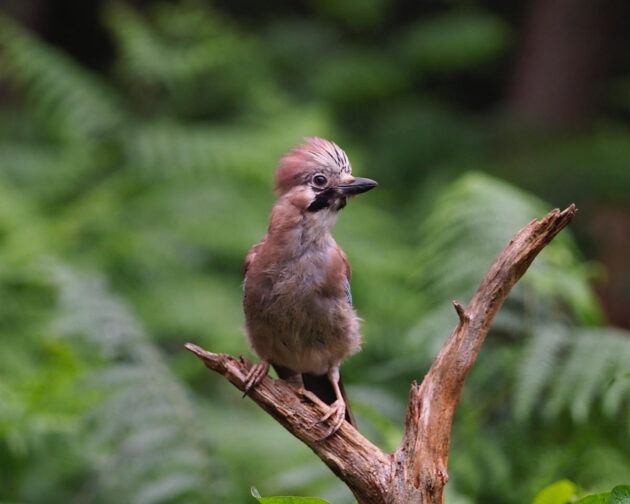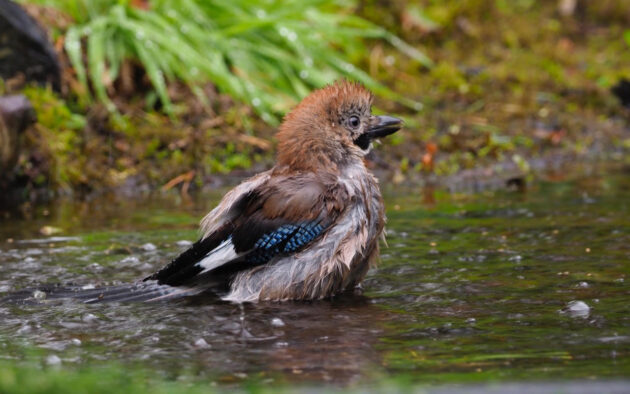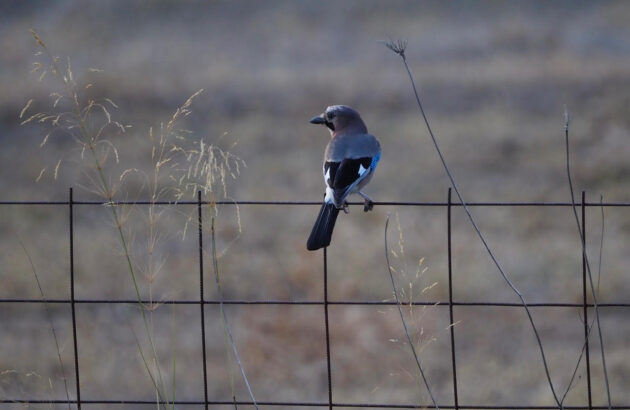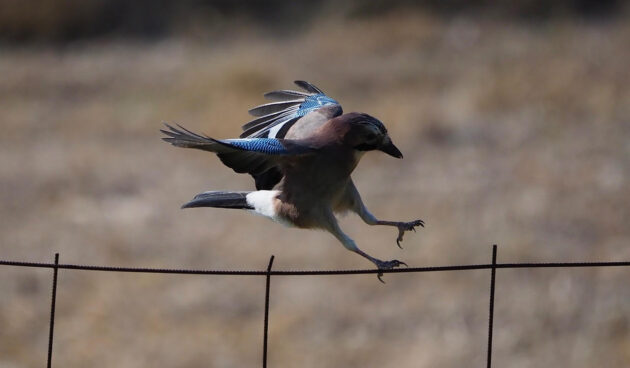By David Tomlinson
David Tomlinson has been interested in birds for as long as he can remember, and has been writing about them for almost as long. An annual highlight is hearing his first Cuckoo of the year at home in Suffolk, England, which he rates as almost as exciting as watching White-necked Rockfowls in Ghana or Steller’s Eiders in North Norway. A former tour leader, he has seen an awful lot of birds around the world, and wishes he could remember more of them.
Some years ago, when there was a move to revise and modernize English bird names, there was a suggestion that the Jay should be called the Acorn Jay, to differentiate it from its four Asian cousins that are also members of the Garrulus genus (the Plain-crowned Jay, White-face Jay, Black-headed Jay and Amami Jay). The proposal didn’t catch on, so it ended up as the Eurasian Jay, one of 48 birds, according to HBW, that have the rather boring moniker Eurasian in front of their names. Of course, Acorn Jay would have been appropriate, as there’s nothing this bird likes more than acorns, as I was reminded during a recent visit to the Greek island of Kefalonia. The island is covered in evergreen oak trees (Quercus ilex), and these trees provide a prolific crop of acorns for the Jays to enjoy.

The Jay’s enthusiasm for acorns is well documented, and they will start harvesting them as soon as they are ripe, flying off with as many as six or seven in the gullet and another in the bill. Each one will be carefully cached, and the great majority will be recovered, and eaten, during the lean months of winter.
Jays clearly have a remarkable memory for where they store their acorns, but invariably some will remain buried, and many of Britain’s oak forests (and presumably many of Eurasia’s oak forests) are thought to have been planted by Jays. Observers have noted these colorful crows flying up to 18km to and fro from an old oakwood when collecting acorns.

They are normally shy and relatively secretive woodland birds, but at this time of the year when they are in full acorn-collecting mode, they become much bolder and more conspicuous. It’s a different matter in the spring. In the distant days when I used to participate in bird races, finding a Jay in May was always a challenge. I remember once reaching over 130 species (a good total for a May Day in England) without having seen or heard a Jay, despite spending time in oak woodland. We found one in the end, which was a great relief as it would have been a bad bird to have missed.
I’m sure that if Jays had a voice as beautiful as their plumage they would have more admirers, but these noisy birds’ calls are generally described as ugly, harsh, and raucous, while they didn’t get the name Garrulus for nothing. In the spring, though, Jays can surprise you with their rather unlikely song, described by BWP (Birds of the Western Palearctic) as a “medley of mimicked calls and phrases”. Jays are extremely good mimics, which Merlin users should be aware of.

While we all enjoy seeing Jays in our gardens in the autumn, they are less popular in the spring. David Bannerman, writing 70 years ago in the first volume of The Birds of the British Isles, noted that the Jay “is a frequent pilferer of gardens and orchards” and “an unscrupulous arch-egg-robber. Not only eggs but nestling birds of many species fall prey to the Jay.” I remember Eric Hosking, Britain’s first professional bird photographer, telling me that he much preferred working in woods where gamekeepers shot and trapped the Jays. Here there was considerably less likelihood of the bird whose nest he was photographing being raided. Many of Eric’s classic photographs were of birds at their nest, taken from a hide. He worked with short lenses on full-plate cameras, so had to be close to his subject.
Jays have an enormous range and really do live up to being Eurasian, as they can be found as far east as Japan. There are no fewer than 27 recognized subspecies in six groups.

Source link


